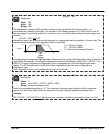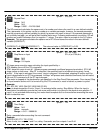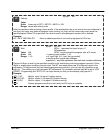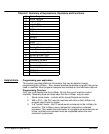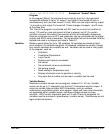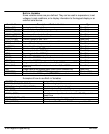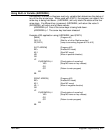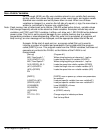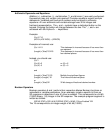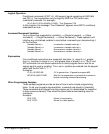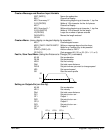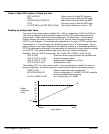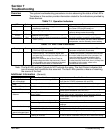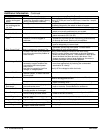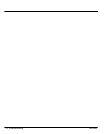
Keypad Programming 6-29MN1854
Arithmetic Operands and Equations
Addition (+), subtraction (–), multiplication (*), and division (/) are easily performed.
Expressions may only contain one operand. Complex equations require multiple
statements. Variables and fixed point numbers may be mixed in arithmetic
equations. All user arithmetic and variable storage uses 32 bit integer and
fractional representation. The + and – symbols have a dedicated button on the
keypad. Pressing the button will change between the two. The *, /, and = are
accessed with the Alpha+0+ ... keystrokes.
Example:
(X)=(Y)*10
(AO15=(VOLTAGE) + (ERROR)
Examples of incorrect use:
(X)=1+2–3 This statement is incorrect because it has more than
one operand.
(Length)=(Total)*0.3125 This statement is incorrect because it has more than
four decimal places.
Instead, you should use:
(X)=1
(X)=(X)+2 or (X)+=2
(X)=(X)–3 or (X)–=3
and
(Length)=(Total)*3.125 Multiply the significant figures
(Length)=(Length)*.01 Then move the decimal place
or
(Length)=(Total)/32 32 bit storage of fractional decimal number
Boolean Operators
Boolean operators & and | perform their respective bitwise Boolean functions on
immediate or variable parameters. As an example, isolate a specific bit from an
SD response to determine if axis #1 drive is enabled. This corresponds to a bit #5
(10000) Binary, (16) Integer in the SD response. The example program segment is
written as follows:
(DRIVE STAT)=(SD1)&16 IF(DRIVE STAT)=16 MS,1“Drive Enabled” EB
The 16 corresponds to an integer weight of bit #5 (10000).



